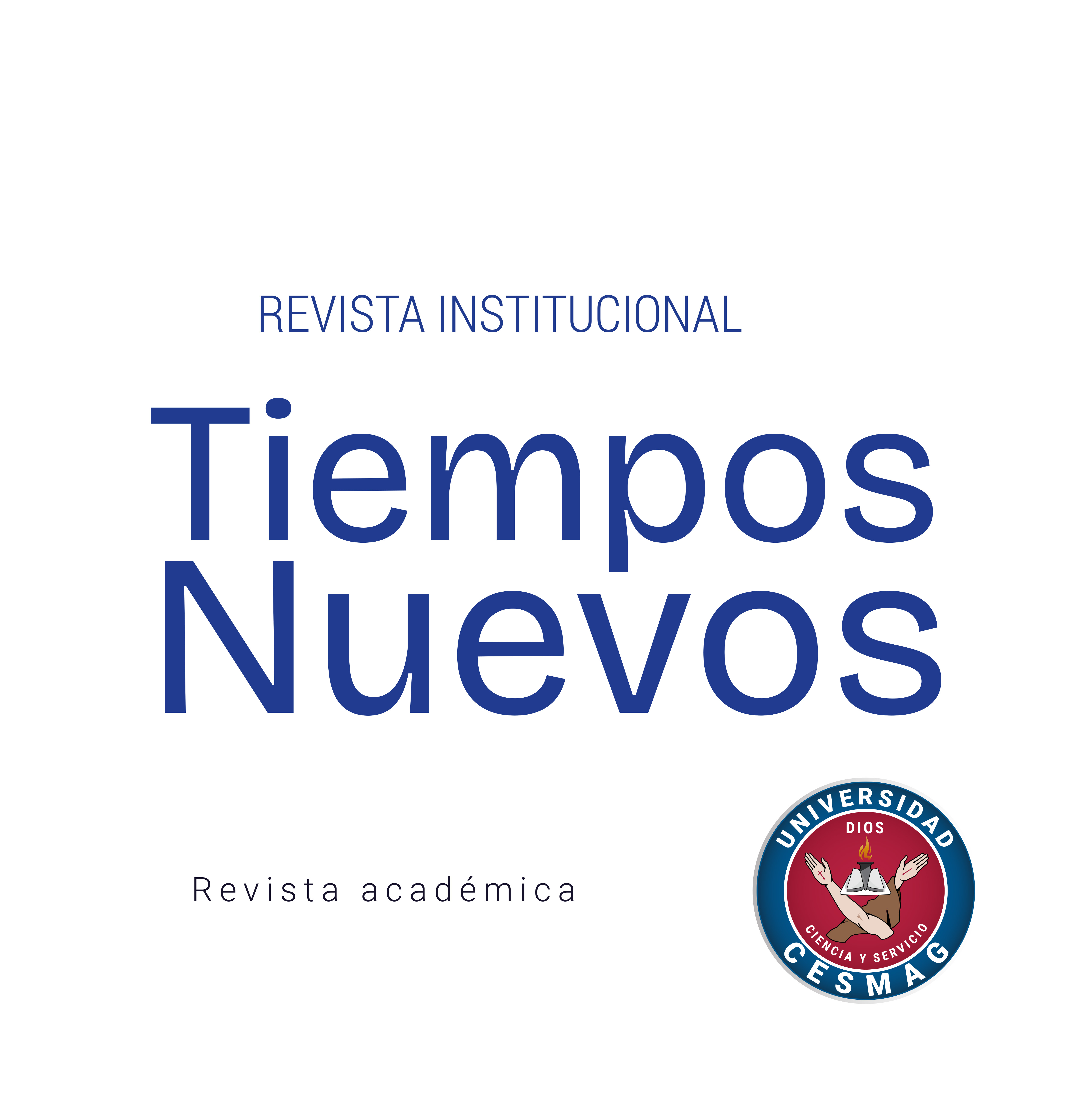Saint Damien University Center
A space for life and transformation
DOI:
https://doi.org/10.15658/rev.inst.tiempnuevos22.12272901Keywords:
capuchins; Christ; Gospel; Saint Demian; St. Francis of Assisi.Abstract
In a world of symbols, cultural forms and roots on which human activity is based, it is necessary to recall events and meanings in order to better understand the presence of the Friars Minor Capuchin in Pasto, and currently also in the village of Catambuco with the “Saint Damien University Center”.
The article tries to gather some key elements that refer to the relationship between the Church of Saint Damien, the crucifx, the life of St. Francis of Assisi and his charism. The name Damien is familiar to the Franciscans, and of course, to the Friars Minor Capuchin from which the essential work of CESMAG University springs, and whose origin comes from the Franciscan spirituality. This research intends to answer the questions: why is it called “Saint Demian University Center””? And who is Saint Demian?. It also helps to look at Saint Demian and the Capuchins; the sense and meaning of the Christ of Saint Demian; and St. Francis of Assisi: from symbol to action. The fnal part of this research, refers to the challenge of CESMAG University moving from the symbol to the commitment with the youth of Nariño and with the place chosen to sustain the mind and spirit with the treasures of science and spirituality.
Downloads
References
Biblia de Jerusalén. (s. f.). https://www.bibliacatolica.com.br/es/la-biblia-de-jerusalen/
Catecismo de la Iglesia Católica. [CIC]. (1997). Editora Géminis, Ltda.
Catholic.net. (2022, 7 de julio). Cosme y Damián, Santos. https://es.catholic.net/op/articulos/31927/cosme-ydamin-santos.html#modal
De Castellana, G. (2006). Filosofía Personalizante y Humanizadora. (2.a ed.). Empresa Editora de Nariño [EDINAR].
Eliade, M. (1974). Imágenes y símbolos. Taurus.
Directorio Franciscano. (s. f.). Escritos de San Francisco de Asís. Alabanzas que se han de decir en todas las Horas [AlHor]. https://www.franciscanos.org/esfa/alhor.html
Directorio Franciscano. (s. f.). Escritos de San Francisco de Asís. Alabanzas del Dios Altísimo [AID]. https://www.franciscanos.org/esfa/ald.html
Directorio Franciscano. (s. f.). Escritos de San Francisco de Asís. Regla No Bulada [Rnb]. https://www.franciscanos.org/esfa/rnb1r.html
Directorio Franciscano. (s. f.). Escritos de San Francisco de Asís. San Buenaventura: Leyenda Mayor de San Francisco [LM]. http://www.franciscanos.org/fuentes/lma01.html
Hernández, R., Acosta, S., Guerrero, O., Rojas, E. & Enríquez, S. (2007). Teleología: Hacia el futuro deseable. Empresa Editora de Nariño [EDINAR].
Herranz, J., Garrido, J. & Guerra, J. A. (Eds). (2017). Francisco y Clara de Asís, escritos. Editorial Institución Universitaria CESMAG.
Holyblog. (2021, 29 junio). Cosme y Damián: los santos médicos que curaban gratis. https://www.holyart.es/blog/santos-y-beatos/cosme-y-damian-los-santos-medicos-que-curaban-gratis/
Moriceau, R. (1987). El Cristo de San Damián. Descripción del icono. Selecciones de Franciscanismo, XVI(46), 45-51. http://www.franciscanos.org/enciclopedia/moriceau
Tamayo-Acosta, J. J. (1995). El ser humano, animal simbólico. En Hacia la comunidad 3. Los sacramentos, liturgia del prójimo. Editorial Trotta. https://mercaba.org/FICHAS/Religion/animal_simbolico.htm



.png)
